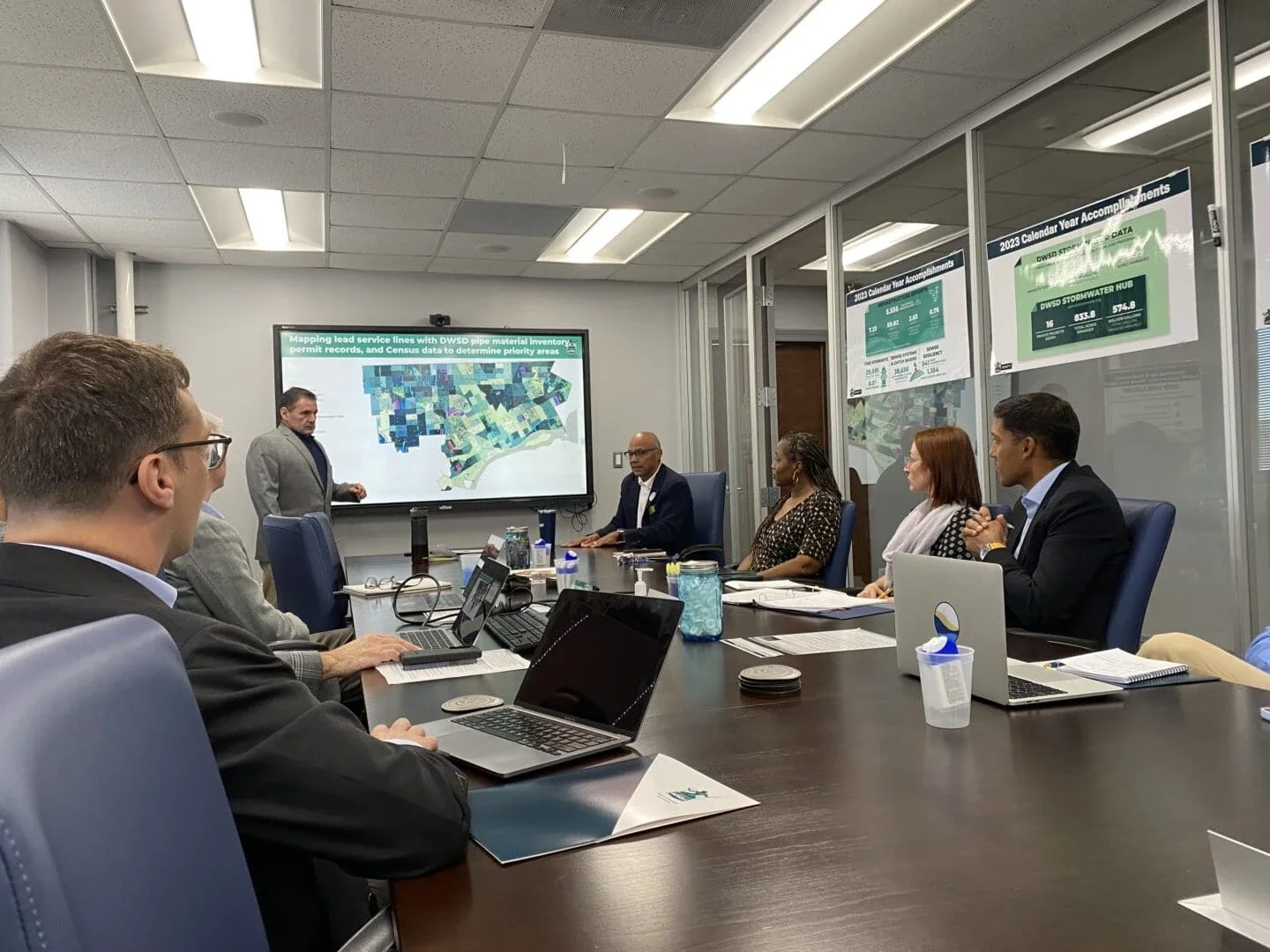Imagine sitting down at your dinner and being asked: “Tap water with lead, or bottled?”
It’s not a question anyone wants to hear, but this remains the reality for over nine million households in America still serviced by water main pipes made of lead that connect to their home plumbing.
No level of lead is considered safe for human consumption. So the U.S. federal government ruled in October that all lead pipes in the U.S. must be replaced within ten years, and made $2.6 billion available to fund this work.
Unfortunately, detecting lead service lines can be like a game of blindfolded piñata. Little to no reliable information means randomly picking a dig site. This is inefficient and extremely costly: as much as $3 million for every 1,000 excavations, which would exhaust available federal funding long before the job was done.
What if there was a way to increase the accuracy of locating lead pipes ― from current levels of around 25 percent to over 90 percent accuracy ― before breaking ground?
 Detroit Water and Sewerage Department (DWSD) Director Gary Brown and Deputy Director Sam Smalley discussing lead service line replacement progress with BlueConduit and The Rockefeller Foundation.
Detroit Water and Sewerage Department (DWSD) Director Gary Brown and Deputy Director Sam Smalley discussing lead service line replacement progress with BlueConduit and The Rockefeller Foundation.
BlueConduit Searches Millions of Service Lines
That’s exactly what BlueConduit has been doing since 2019, supported by The Rockefeller Foundation through the fiscal sponsor Windward Fund. Leveraging the power of artificial intelligence, BlueConduit’s software predicts where lead service lines are located.
In the last five years, they’ve analyzed over six million service lines. They’ve worked with more than 80 water systems covering over 400 cities across 26 states, and by increasing the accuracy of predictions, created more than $400 million in savings for cities and water systems.
As part of this work, BlueConduit recently launched their LeadOut Map. This comprehensive and publicly available tool provides a map of lead service lines in all 50 states along with estimates of which communities might be most at risk of lead exposure through drinking water.
This direct impact on the health of millions of Americans is one of many reasons we’re highlighting BlueConduit as a “Big Bet for America,” a novel initiative that The Rockefeller Foundation has been ramping up over the last year under the leadership of Zia Khan, Chief Innovation Officer.
Based on the principles laid out in “Big Bets,” the program seeks to catalyze leaders around the country to use our model — novel solutions, unlikely partnerships, and closely tracked progress — to solve some of America’s toughest problems.
“Big Bets for America takes risks on novel solutions that are higher risk and higher reward than other alternatives,” Khan said. “As such, we expect some failures, but will learn to avoid repeating them and continuously improve the methodology. Success will reignite optimism for what is possible when we come together across divides and solve problems affecting people’s daily lives.”

The Rockefeller Foundation, BlueConduit, Detroit Water and Sewerage Department (DWSD), and contractor teams after a successful lead service line replacement in Detroit.
Strong partnerships, as well as innovative technical solutions, are a cornerstone of BlueConduit’s success.
In addition to working with expert nonprofit partners like the Environmental Defense Fund, the Natural Resources Defense Council, and the Environmental Policy Innovation Center (another grantee of The Rockefeller Foundation), BlueConduit has forged close relationships with city and state water departments, customizing their tool to meet each community’s needs.
“BlueConduit’s journey demonstrates the power of partnerships. With support from The Rockefeller Foundation, we’ve used data science to assist disadvantaged community water systems, saving millions while helping Detroit and other cities remove lead pipes and become a leader in AI-driven innovation,” said BlueConduit cofounder Eric Schwartz. “Together, we’ve shown what’s possible.”
During a recent visit to Michigan, we saw this in action. Our president, Rajiv Shah, met with Director Gary Brown and others from the Detroit Water and Sewerage Department (DWSD), as well as BlueConduit’s co-founder Eric Schwartz, CEO Lorne Groe, and their team, to discuss the progress made.
Since 2020 — when The Rockefeller Foundation’s Innovation team first began to support BlueConduit’s work to expand its tool to Detroit and three other pilot cities — Detroit has increased its lead pipe replacement rate by more than ten times, going from 700 lines to 8,000 annually. BlueConduit helped save an estimated $185 million by eliminating the need to manually excavate every stop box in Detroit in the search for lead pipes.
Centering Equity in the Work
BlueConduit and DWSD also are working together to ensure a people- and equity-centered approach. By incorporating data on the presence of children, income strata, likelihood of lead pipe presence, and other factors, BlueConduit has been helping Detroit prioritize which neighborhoods to dig in first.

Detroit Water and Sewerage Department (DWSD) supervising the lead service line replacement dig.
The proof was in the pudding when we visited an active dig in the Pingree Park neighborhood of Detroit. BlueConduit’s tool had accurately predicted the presence of a lead pipe, which contractors promptly replaced with a shiny new copper service line.
As always, there’s still more work to be done. Detroit is one of the cities leading the way in lead service line replacement, but many others are far behind in meeting the replacement deadline. And beyond lead pipes, there are other lurking sources that need to be addressed, including lead in fixtures, paint, and more.
In the meantime, with the help of solutions like BlueConduit’s, we can steadily bridge the gap between ambitious goals and the reality of the current state, working hand in hand with government, non-profit, tech, and philanthropy towards a more equitable and safe future for all.



